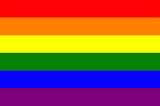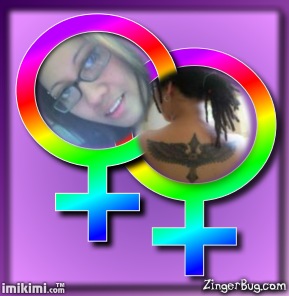
The color purple (or, more accurately, lavender) became popularized as a symbol for pride in the late 1960s - a frequent post-Stonewall catchword for the gay community was “Purple Power”.
Purple as a gay / lesbian color was pushed into pop-culture in 1999 by Rev. Jerry Falwell and his kinky Tinky Winky theory. Falwell said that Tinky Winky, the TV Teletubby from Itsy Bitsy Entertainment and PBS, is in all likelihood gay.
Why? Like Barney, Tinky Winky is purple. Tinky Winky carries a bag. Tinky Winky has a triangular antenna on his head. Purple, the gay pride color, is a pretty good tip-off. The so-called magic bag? A purse, and you know what that means. But the triangular antenna is the clincher. A big gay pride signal.
Whenever I see someone wearing a triangular antenna on his head, the first thing I always think is: gay. Or at least very happy.
Purple as a gay / lesbian color was pushed into pop-culture in 1999 by Rev. Jerry Falwell and his kinky Tinky Winky theory. Falwell said that Tinky Winky, the TV Teletubby from Itsy Bitsy Entertainment and PBS, is in all likelihood gay.
Why? Like Barney, Tinky Winky is purple. Tinky Winky carries a bag. Tinky Winky has a triangular antenna on his head. Purple, the gay pride color, is a pretty good tip-off. The so-called magic bag? A purse, and you know what that means. But the triangular antenna is the clincher. A big gay pride signal.
Whenever I see someone wearing a triangular antenna on his head, the first thing I always think is: gay. Or at least very happy.















No comments:
Post a Comment